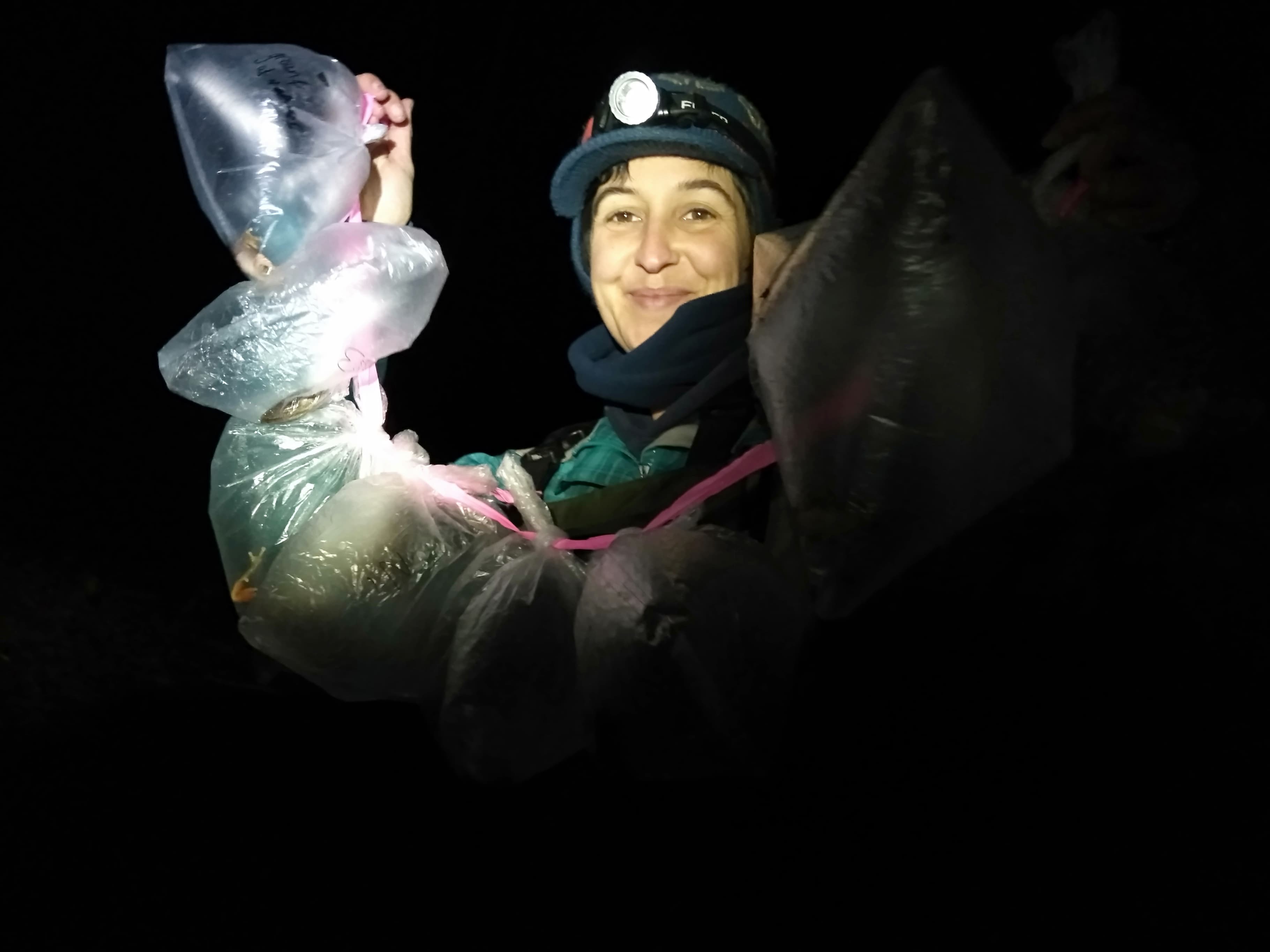The Future Leaders of Amphibian Conservation program is an award to a number of early-career conservationists from around the world that have been identified by the Amphibian Survival Alliance as the next generation of am-phibian conservationists. So far we have awarded 19 Future Leaders from 12 countries (Bolivia, Brazil, Peru, Mexico, Ghana, South Africa, Uganda, India, Nepal, Pakistan, Australia and United States). You can learn more about some of the Future Leaders of Amphibian Conservation here.
Can you tell us a little bit about you, Kaya?
Like most of you, I’ve been a nature lover since birth. At university, I stumbled into an opportunity to do some frog surveys, and that was it – I’ve been hopping mad about frogs ever since! I was lucky enough to secure both an honours and PhD position studying frog ecology and threatening processes, as well as a position using photo-recapture methods to monitor frogs for the New Zealand Department of Conservation. I now work as a post-doc at the University of Newcastle, studying the impacts of mining, chytrid, and fire on vulnerable stream frogs.
What projects have you been involved in to promote amphibian conservation?
A lot of my research has been based on industrial land, which makes it difficult to promote our projects. Instead, I try to promote the need for amphibian conservation in general. To do this, I have given local community presentations and radio interviews, and written for the Australian Wildlife magazine. Recently, our lab has launched a citizen science project that engages locals to “adopt” a sound recorder for remote acoustic monitoring. We’ve also developed “have you seen me?” style brochures to encourage citizens to help us find rare frogs. And this September, we released “Biomes”, an interactive website with a virtual gallery to engage and educate the public on biodiversity. Of course, I made the frog diversity posters! Please check it out at www.biomes.art
What is your favourite amphibian species and why?
With such diversity, it really is impossible for me to choose just one favourite amphibian – so here are my top three in no particular order; (1) Archie’s frog, Leiopelma archeyi, is on the list because it is one of the first amphibians I worked with, they’re super fascinating being one of the oldest frog species and a non-verbal terrestrial breeder. L. archeyi have stunning green, black, and orange colouring which hides them perfectly among the moss and ferns of a New Zealand rain forest floor. They’re so beautiful, I’ve kept a photo of one in my wallet for the past ten years! (2) The giant burrowing frog, Heleioporus australiacus, is a boss of a frog – they’re big, they’re chunky, they know what’s up. Giant burrowing frogs are purple with bright yellow dots and loads of hard black spines used for amplexus, and they are one of the few ground frogs that always look, if not happy, then at least mildly amused. (3) Peron’s tree frog, Litora peroni, is a frog I love because it looks even happier than giant burrowing frogs. With their cackling, laugh-like call, their adorably large, sticky toe pads, and stunning cross pupils, they are a common frog in my area that I never get tired of seeing.
Has been recognized as a Future Leader of Amphibian Conservation by ASA made a difference in your career so far?
Becoming an ASA Future Leader for Amphibian Conservation has changed how I see amphibian conservation. It has opened my world view to the myriad of challenges facing amphibians globally, and to the different approaches passionate, young people are making to meet those challenges. The Future Leader program has made me feel connected to something larger than just the species I’m working on, and I’m really glad to be a part of it.

